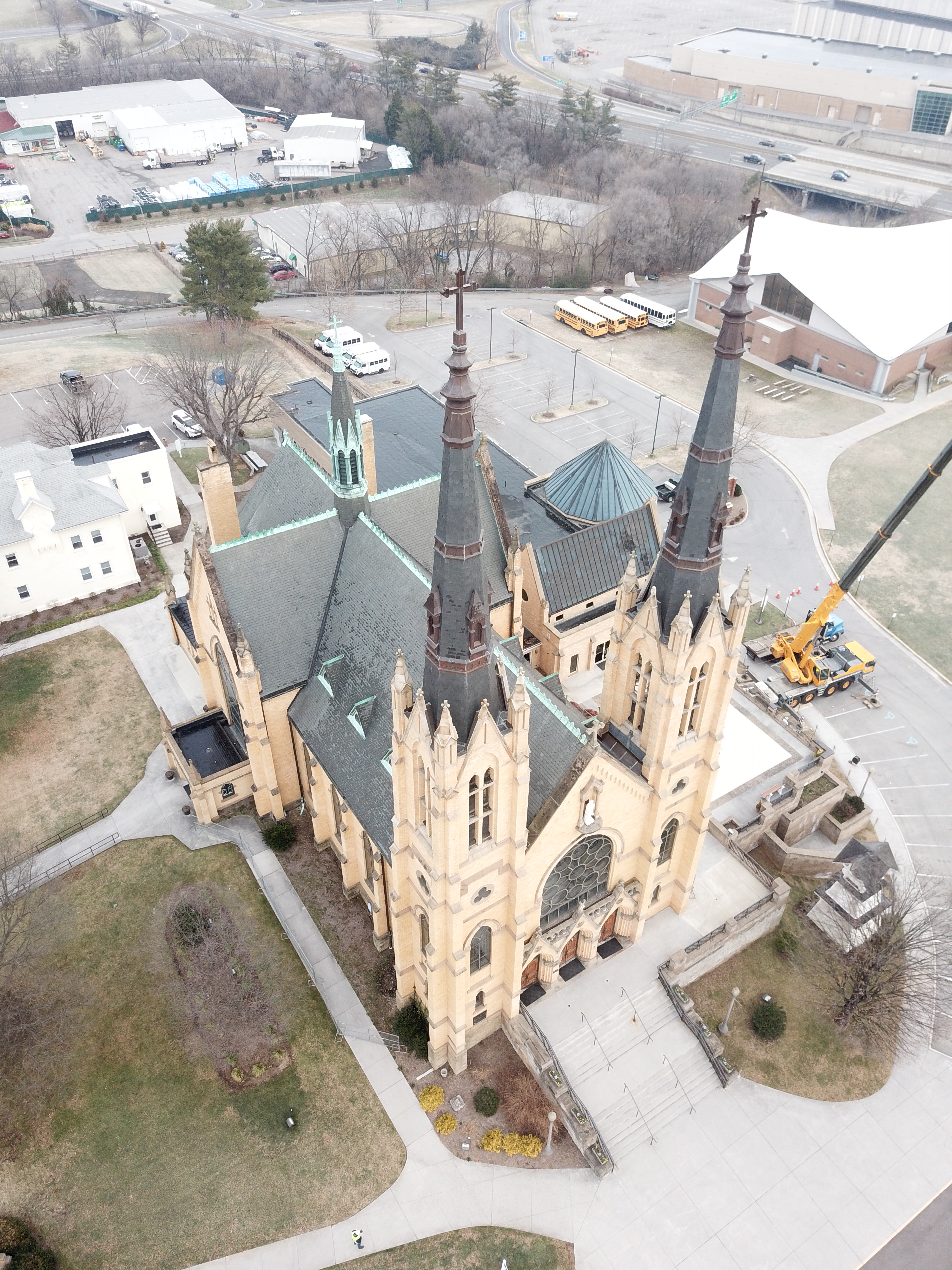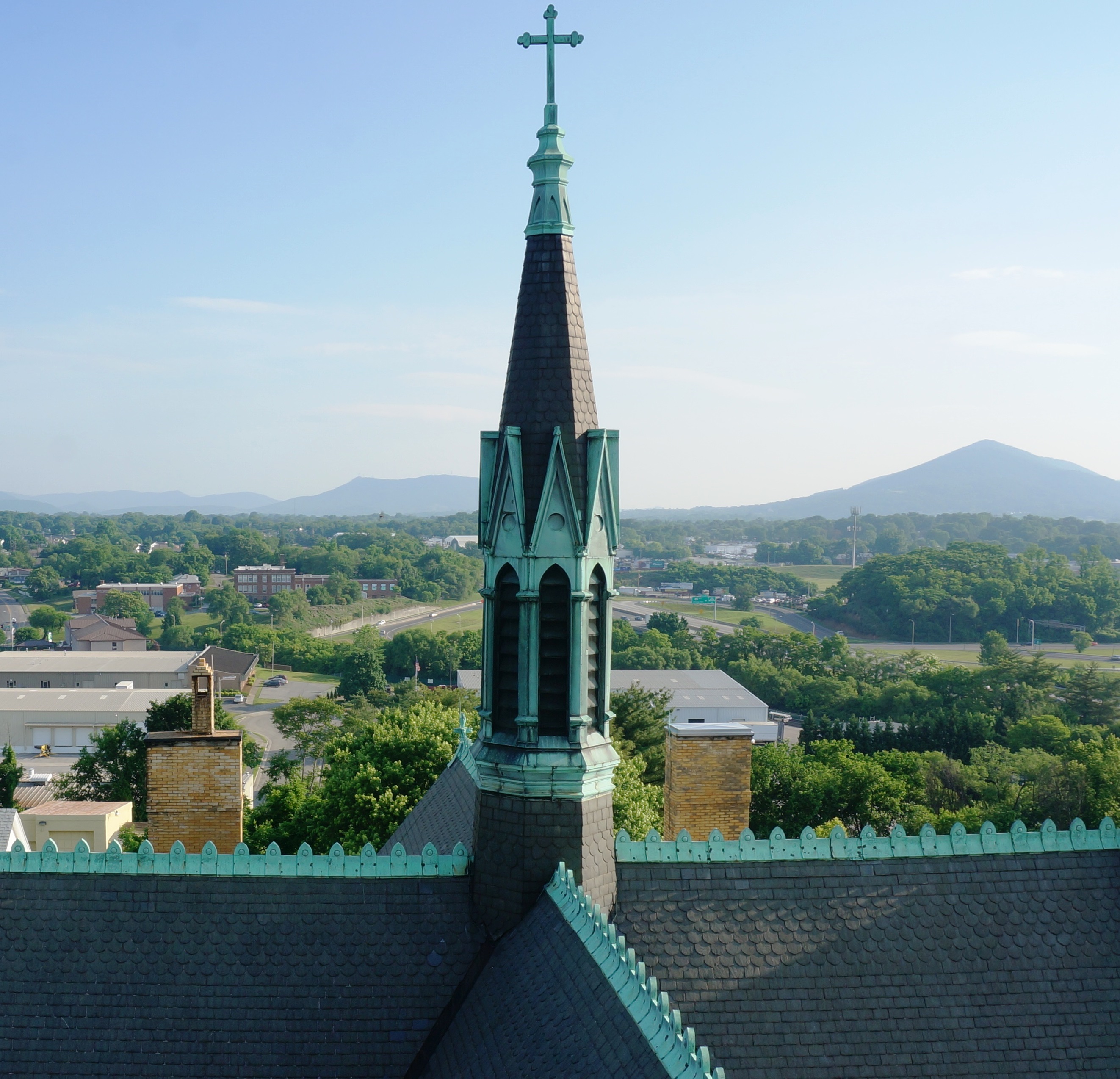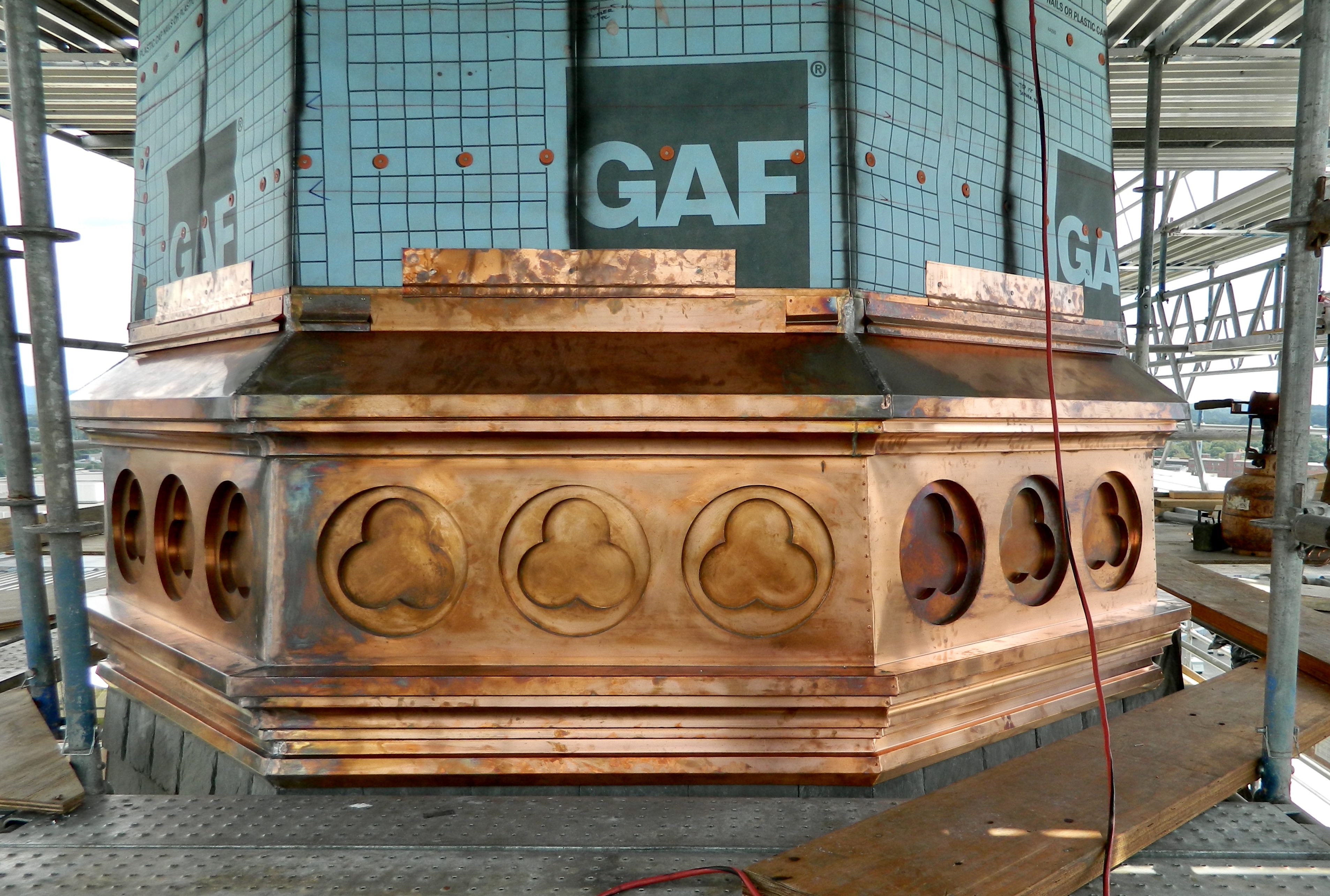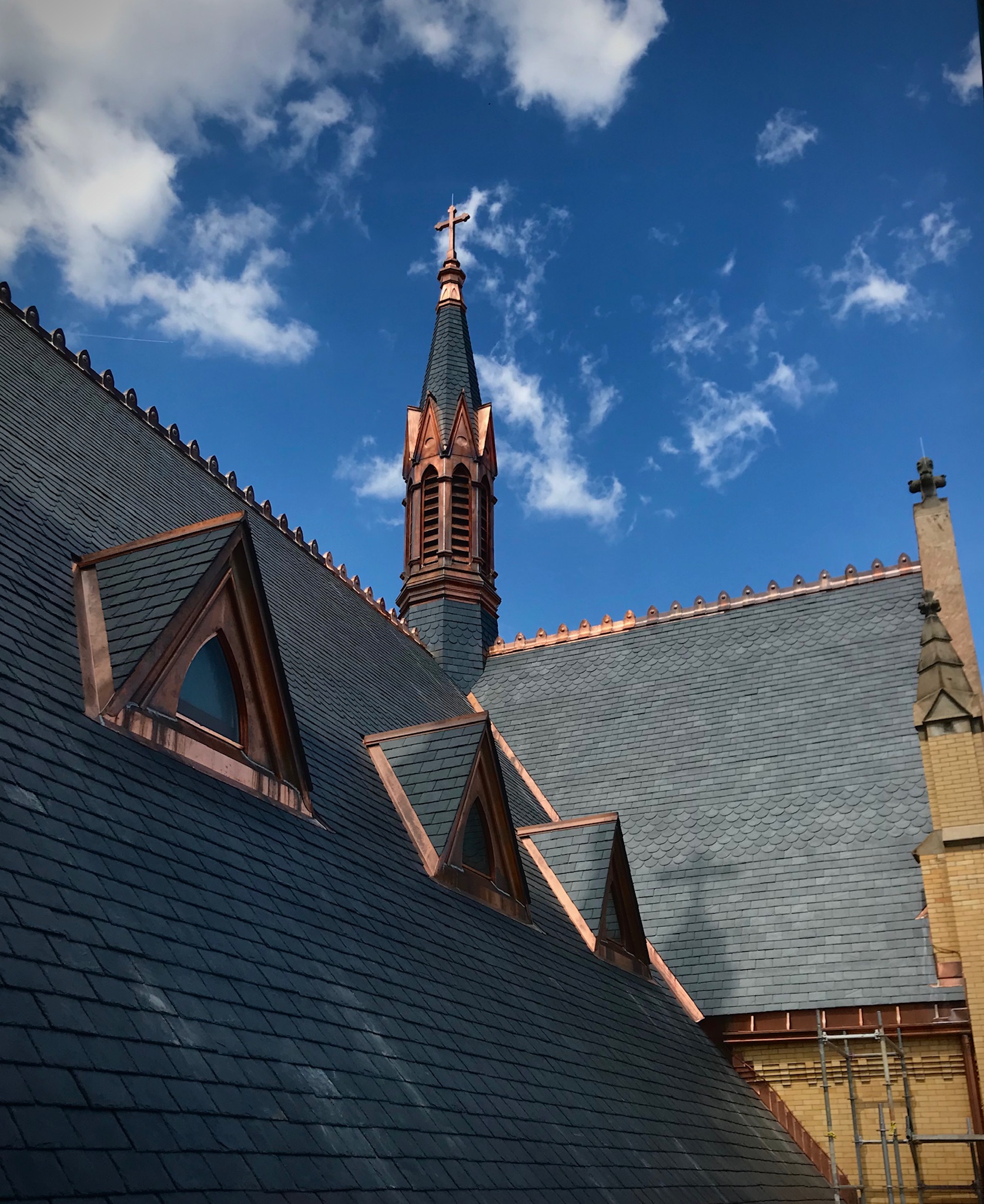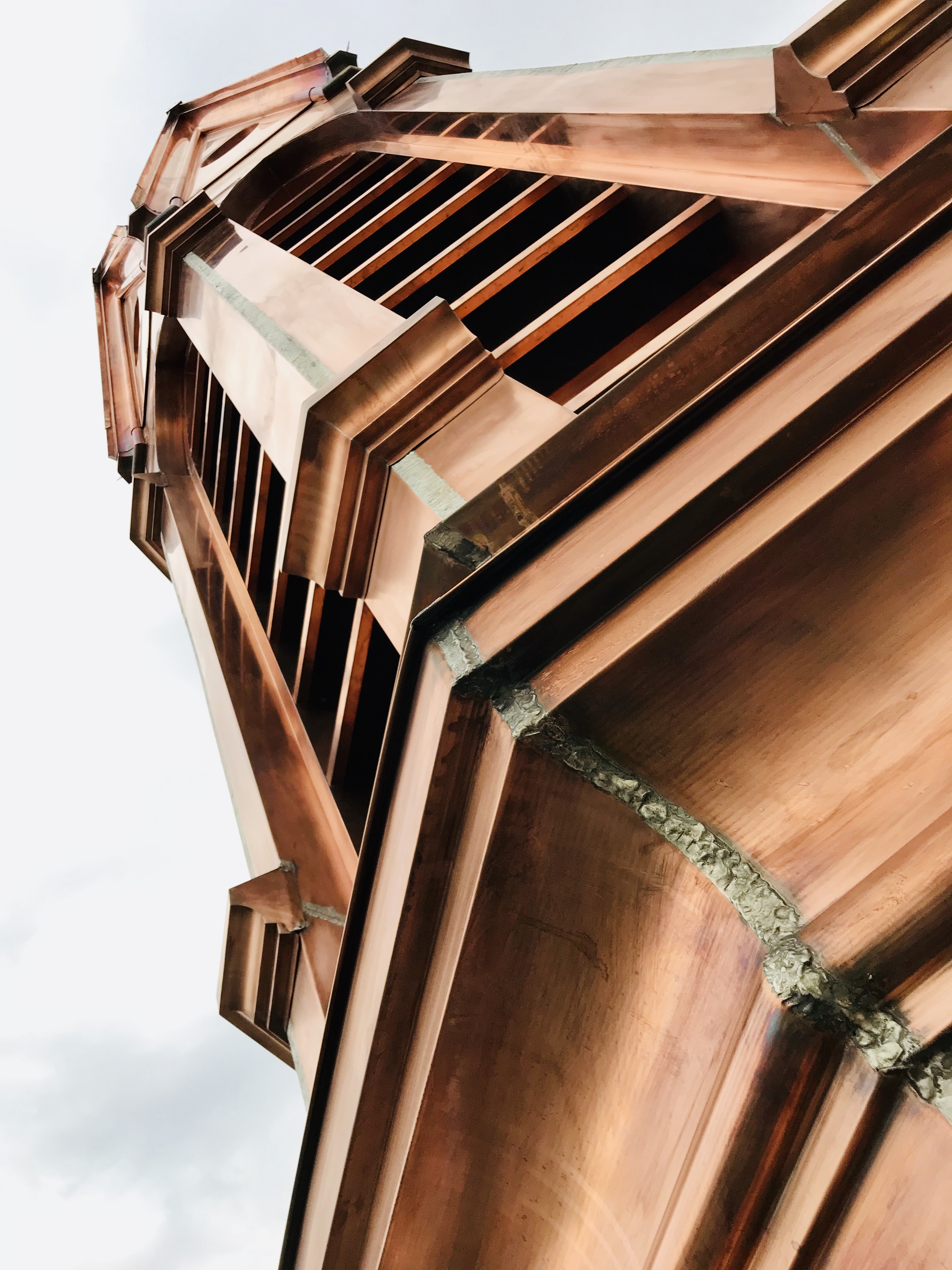Roanoke, Virginia
Restoration
General Contractor
The Durable Slate CompanyColumbus, Ohio
Architect
Cornett & Cundiff, Inc.Roanoke, Virginia
Structural Engineer of Record
Master Engineers And DesignersLynchburg, Virginia
Sheet Metal Contractor
The Durable Slate CompanyColumbus, Ohio
Copper Fabricator
Chicago Metal SupplyChicago, Illinois
Copper Fabricator
OrnametalsCullman, Alabama
The St. Andrew’s Catholic Church Steeple/Masonry Restoration Project took place in Roanoke, Virginia. The main goals of this project were the repair, restoration, and preservation of the historic twin steeples and the spire of the 125-year-old church. The structure includes an east and a west steeple. Each steeple consists of a square masonry tower containing a belfry, and a wood framed slate and copper covered steeple towering above the belfry. Combined, St. Andrews stands at a mighty 175 feet.
The Durable Slate Company removed the original copperwork as needed to replicate each architectural detail as an exact duplication. Since the original copperwork was created using larger overlapping architectural sheets that were bent over and fastened with face nails, some details were modified to allow all the new pieces to be installed with hidden fasteners. Seams that could not be sealed with a watertight lock were hand soldered in place using traditional soldering techniques. The steeple work was laid out and coordinated so that the bands of copper could be alternately installed as the section of slate was completed on the opposite steeple. In this way both the metal and slate crews were able to maximize efficiency and reduce down time. The work continued this way up each steeple until the massive 20-ounce, brazed copper crown pieces were lowered in place and topped with a cross.
The main church roof incorporates decorative ridge roll, 8 dormer faces, custom replicated gutter, and a small ornamental piece at the top of the rear bullnose. The metalwork at all valleys, pans, and parapet walls were also replaced with new copper. The center rear spire was removed with a crane to a scaffold system on the ground once it was determined that it was not feasible to erect scaffold on the church sanctuary roof. Each piece was once again fabricated to match the original and installed to fit using hidden fasteners and traditional soldering techniques. After the restoration work was completed up to the top crown copperwork it was lifted back into place, re-secured and the crown and cross installed from a man basket.
An integral lightning protection system was also installed in conjunction with the copperwork on the steeples, spires, and main sanctuary roof. As a result, the restored church has copperwork that exactly replicates the original architectural details, with an improved system of connection and increased water protection.

